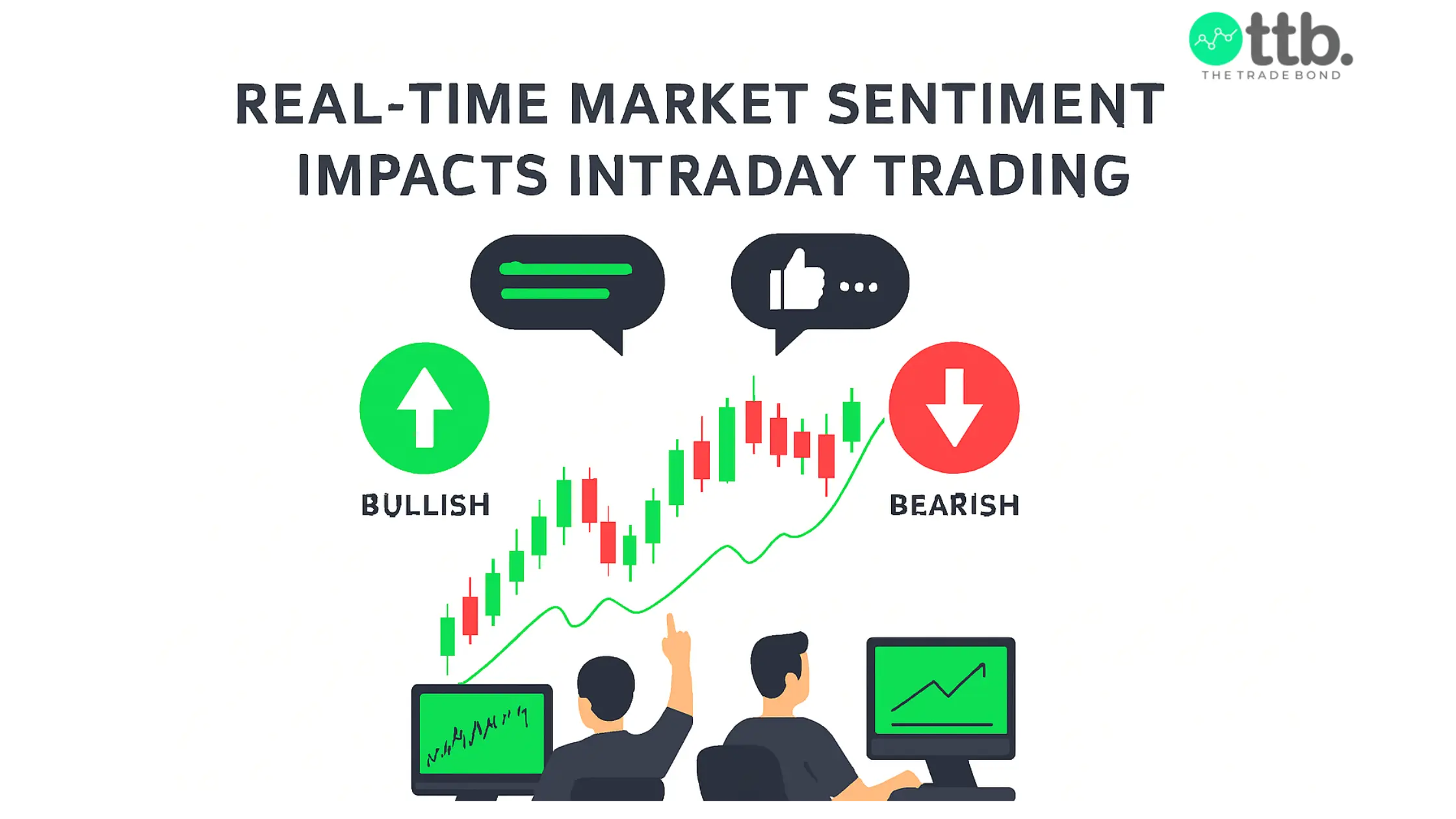How market sentiment in intraday trading impact trades

Understanding Market Sentiment in Intraday Trading
Understanding market sentiment in intraday trading helps traders align their strategies with real-time market behavior. Market sentiment plays an important role in how prices move within one trading session. Also, it reflects the collective attitude of traders and investors towards the market at a particular time. By understanding sentiment, traders can identify potential short-term price swings. Therefore, you can adapt their strategies accordingly. In this blog, you will know about what is market sentiment, how it impacts intraday price action, and how traders can track and manage sentiment shifts.
Knowing What is Market Sentiment Exactly?
Market sentiment refers to the psychology of market participants at a given moment. It can be either bullish, bearish, or neutral. By recognizing market sentiment help traders decide when to enter and exit positions. This mood guides trading activity and impacts demand and supply. Also, this can directly impact intraday price changes.
For example, if there is positive news, many traders may turn optimistic, pushing prices up quickly. On the other hand, negative news can increase fear and lead to sudden declines.
If you are new to active trading, you can go through our guide on intraday trading tips. Here we explain the basics you should know before analyzing market sentiments.
How Market Sentiment in Intraday Trading Influences Price Movements
Market sentiment acts as an invisible force where price pushes beyond the levels during intraday sessions. Although most of the participants are optimistic, they want to buy aggressively. This creates upward price momentum. Conversely, when fear dominates, selling pressure declines sharply, even if there’s no big news. These real-time tools give early signals about shifts in market sentiment in intraday trading.
Short-term traders also observe sudden spikes or drops in prices that don’t match chart patterns. These moves are usually based on sentiment. Due to this behavior, traders can manage entries and exits in a better way.
If you’re focusing on index-based trading, check out our blog on how to do intraday Bank Nifty options trading. This explains how sentiment around banking stocks can influence the Bank Nifty index intraday.
Market Sentiment Tracking with Real-Time Tools
With the availability of many advanced tools, tracking sentiment in real time has practical for intraday traders. Tools such as sentiment scanners, trend trackers, and news feed aggregators can identify how the broader market behaves.
For example, monitoring keywords, F&O open interest data, and live market maps. These can give clues about shifting market behavior. Due to sudden changes in volume and price momentum also act as quick indicators of sentiment reversals.
Traders who want proper trade ideas can refer to our intraday trading calls provider in India. Where calls are organized after observing market sentiment and technical setups together.
Intraday Stock Prediction Using Sentiment Analysis
One of the advanced approaches to understand market sentiment in intraday trading is sentiment analysis. Sentiment analysis involves using real-time data to predict short-term price movements. You can study social media chatter, institutional activity, sector rotation, and news sentiment scores.
While this doesn’t give any fixed predictions, it offers an edge in anticipating how prices react to new information. Due to sudden positive chatter about a stock, intraday traders may expect a short-term upward push and plan their trades around support and resistance levels.
To apply these methods effectively, you can read our blog on intraday tips for today NSE. Where we share the right approaches for daily analysis.
Impact of Emotions on Intraday Trading
Emotions often impact market sentiment in intraday trading. Because this makes price reactions stronger than expected. Emotions such as fear, greed, and excitement can strongly impact and influence how traders react to market sentiment. When markets rise rapidly, FOMO can lead traders to enter positions without analysis. Similarly, during sudden declines, panic selling often happens even when the price is near support zones.
By understanding emotional links helps traders to avoid emotional decisions. Maintaining discipline and depending on one plan reduces sentiment-driven moves.
Visit our article, Awesome Tips for intraday trading for great profits, to learn how to build discipline in your daily trades.
Handling Sudden Reversals Caused by Sentiment Shifts
Intraday markets reverse their direction quickly when sentiment changes unexpectedly. Also, this can happen because of unexpected news or global market movements. Such reversals can trap traders who enter trades based on the previous trends. Knowing the early signs of changing market sentiment in intraday trading can help you manage such reversals.
To handle this, traders can place stop losses and reduce position sizes during volatile sessions. Also, you can wait for confirmation ofthe price before re-entering. Therefore, observing real-time sentiment indicators can also help when reversals might be developing.
Managing risk during these phases is important. Hence, reacting calmly to sentiment swings helps to save trading capital for better opportunities.
Conclusion
Here by understanding market sentiment in intraday trading helps traders interpret sudden price actions. Although respond more effectively to changing market behavior. While sentiment is not a strategy, combining this sentiment with technical and risk management tools can improve decision making.
Mainly you should focus on building awareness of how emotions act on intraday markets. This understanding can make your analysis more balanced and adaptable to market conditions.
FAQ's
How does market sentiment affect intraday price movements?
Market sentiment in intraday trading is influenced by demand and supply. Where positive sentiment pushes prices because of buying pressure. While negative sentiment declines from selling pressure.
How do emotions impact market sentiment during intraday trading?
Emotions will impact market sentiment in intraday trading. Understanding these emotions helps traders to avoid emotional decisions.
How to handle sudden sentiment shifts in intraday trading?
To handle sudden sentiment shifts in intraday trading, use proper stop-loss, and wait for price confirmation before entering trades. Always monitor sentiment indicators, which help to find reversals early.
